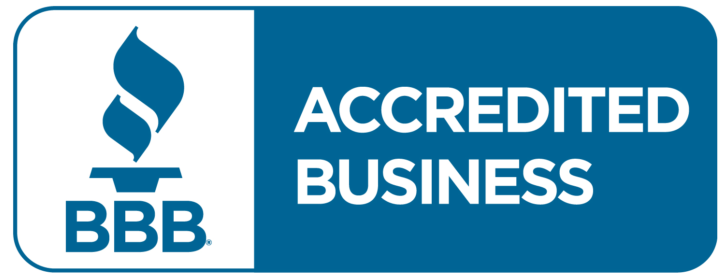
The sale return account is created for recording the sale that is returning from the customer. It is the contra entries of the sales account, increasing in debit and decreasing in credit. The main reason that is recording in debit while the sales return happened is that this account will decrease the total sale revenue. A second example of a contra asset account is Accumulated Depreciation. For instance, if a company has a plant asset such as Equipment with a debit balance of $92,000 and the account Accumulated Depreciation has a credit balance of $50,000, the carrying amount (or book value) of the equipment is $42,000. If a company offers an early payment discount (such as 1% or 2% of the invoice amount if it is paid within 10 days instead of the required 30 days) the amount of the discount is recorded in the contra revenue account Sales Discounts.
Definition of Contra Revenue Account
As can be seen using the two accounts, allows information about the original sale to be maintained on the revenue account, and details of the sale returns to be maintained on the sales returns contra revenue account. While it is acceptable to record and report discounts, returns and allowances within the sales revenue account–especially for very small businesses–doing so leads to the loss of valuable information and insights. The contra asset account of your equipment account is the accumulated depreciation of equipment. When the balance in the accumulated depreciation is $10,000 and your equipment account has a debit balance of $50,000, then the book value of your equipment is $40,000. Given that liabilities have a credit balance, ensure that all your contra liabilities accounts have debit balances.
- Contra equity reduces the total number of outstanding shares on the balance sheet.
- We follow strict ethical journalism practices, which includes presenting unbiased information and citing reliable, attributed resources.
- In this way, a contra asset (credit) lowers the overall value of your accounts receivables (debit) on the balance sheet.
- As a small business owner, understanding how to set up contra accounts enables you to prepare and maintain accurate financial records.
- The transactions are sometimes recorded in one or more accounts, but the balance is usually a debit.
- Under period inventory, we do not record changes in inventory until the end of the period, so this entry is fairly simple.
Contra Asset Accounting & Examples
- The Allowance for Doubtful Accounts is directly related to the asset account entitled Accounts Receivable.
- For the purpose of financial statement reporting, the amount on a contra account is subtracted from its parent account gross balance to present the net balance.
- (A debit balance in a contra asset account will violate the cost principle.) Learn more about contra asset accounts.
- Contra accounts provide more detail to accounting figures and improve transparency in financial reporting.
- For example, if your business has accounts receivable of $50,000 and an allowance for doubtful debts account totalling $5,000, the net accounts receivable is $45,000.
- Therefore, the net amount of the accounts receivable that is expected to turn to cash is $38,000.
Sales returns and allowances is a deduction from sales that shows the sale price of goods returned by customers, as well as discounts taken by them to retain defective goods. When this amount is large in proportion to total sales, it indicates that a business is having trouble shipping high-quality goods to its customers. This is because the initial accounting journal entry at the time of sale was a debit to Accounts Receivable asset account and credit to a Sales Revenue account. If the balance in your allowance for doubtful accounts has a credit of $1,000 and your accounts receivable has $20,000 in normal debit balance, then the net value of the receivables is $19,000. A normal asset has a debit balance, while a contra asset sits against this to show the net balance of both assets on your financial statement.
How to Record a Sales Return for Accounting
- If you debit the contra account, ensure that you offset the related account with a credit balance.
- We will need to keep the returned goods in the company’s warehouse and reflect this transaction correctly in the accounting records.
- The sales discounts contra revenue account records the discounts given to customers on sales made to them, normally a cash or settlement discount.
- The reason for a sales return is usually because of a product defect or a service failure.
- See the entries below on how to record the goods returned by customers into the inventories and how it is affected the cost of goods sold.
- You can use contra accounts to record the goods your customers return, inventory that gets damaged, and equipment depreciation.
If a cash refund is made due to a sales return or allowance, the sales returns and allowances account is debited and the cash account is credited. Contra Asset Account – A contra asset account is an asset that carries a credit balance and is used to decrease the balance of another asset on the balance. Whereas assets normally have positive debit balances, contra assets, though still reported along with other assets, have an opposite type of natural balance. contra expense account A detailed record of the larger sales returns and allowances transactions should be routinely prepared and forwarded to the senior management team, so that they can gain an understanding of the reasons why these deductions are occurring. Better yet, conduct an investigation into the reasons for each one, and include it in the report. This is time-consuming, but can result in management actions that reduce the amount of sales returns and allowances.

If contra assets appear in the credit column, record contra liabilities on side. In the seller’s books, a return or allowance is recorded as a reduction in sales revenue. Since the sales account normally has a credit balance, returns and allowances could be recorded on the debit side (the reduction side) of the sales account. Allowance for doubtful accounts (ADA) is a contra asset account used to create an allowance for customers who are not expected to pay the money owed for purchased goods or services.
Do you own a business?
Accounting for Sales Returns and Allowances

Types of Companies in Managerial Accounting


